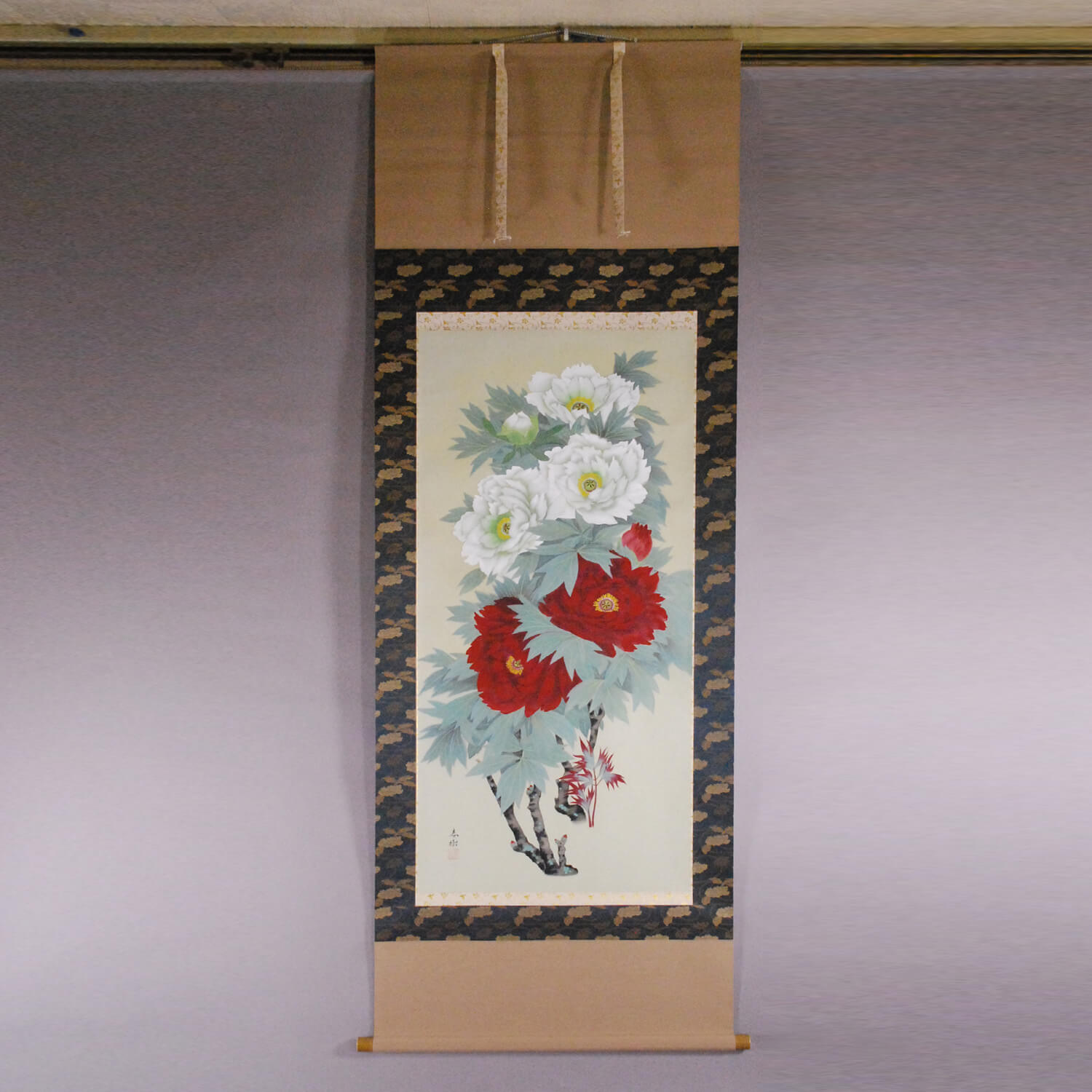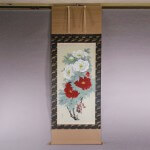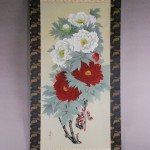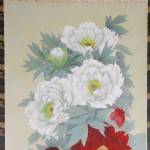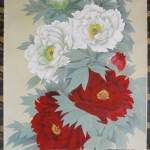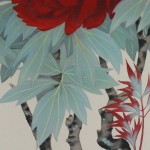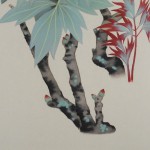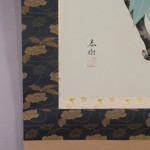Kakejiku Hanging Scroll: Peonies / Wakabayashi Haruki - Botan
- Product ID
- B0006
- Name
- Wakabayashi Haruki
- Profile
A Japanese-style painter
- Size
- 725mm x 1940mm
- Roller End Material
- Ceramic
- Material of the Work
- Silk
- Stock Condition
- Sold out
- Duty and Taxes
Import duty and taxes are beyond our control and may apply to your shipment. Please noted that these fees are the responsibility of the buyer.
- Description
A Japanese peony considered the “king of flowers” has a symbolic meaning that includes wealth, good fortune, and honor. The peony originated in China. Around the eighth century, the Chinese introduced the peony to Japan. The peony is a favorite flower in gardens all over the world; its symbolic meaning serves as an inspiration for a variety of art forms.
In the “kakejiku” (hanging scroll) world, displaying the kakejiku of a peony painting is considered the best hospitality for a guest. Therefore, this kakejiku is often displayed even in seasons other than early summer.
“Kouhaku” means a combination of red color and white colors. Kouhaku is thought to be a good omen. Therefore, the national flag of Japan is a white rectangular flag with a large red disk (representing the sun) in the center.
This is a work of red and white peonies painted by Haruki Wakabayashi. He expresses the peony’s beauty and the happy atmosphere of kōhaku very well. We can almost feel the vitality of the peonies through the depiction of sprouts.

